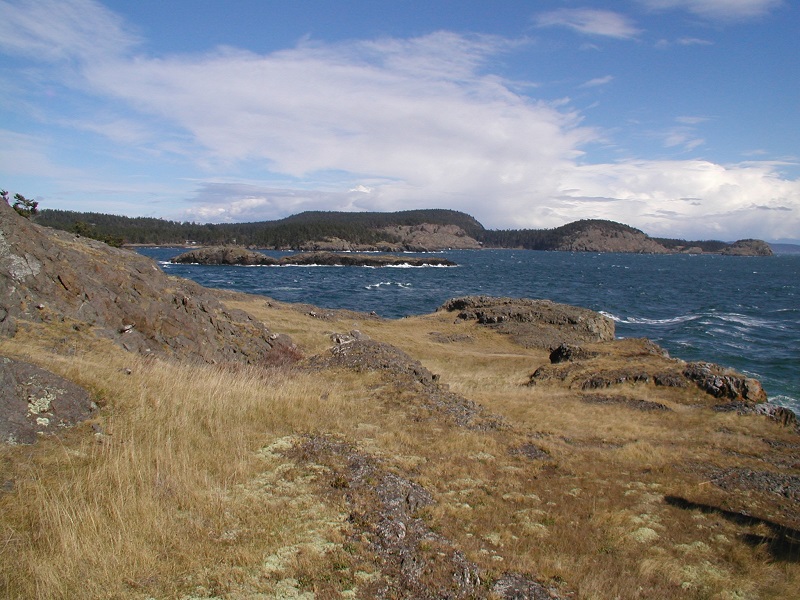Thomas Preserve
Lopez Island
Year Protected: 2005
Land Protected: 3 acres
Shoreline Protected: 1,070 feet
Public Benefits: Rocky balds, shoreline
The story of the Preservation Trust’s three acre Thomas Preserve begins with the advance and retreat of the last glaciers that covered Puget Sound.
As the ice scraped over the native bedrock it left telltale striations to mark its passage. Spectacular Iceberg Point on the south end of Lopez Island gets its name from this glacial movement. In 1854, George Davidson of the U.S. Coast Survey named the point. He is quoted in the Pacific Coast Pilot as saying, “On part of its southern cliff we discovered … remarkably deep and smooth marks of glacial action.” Today, with the addition of the Thomas Preserve, the entire southern shore of the Iceberg Point peninsula enjoys protection that will forever preserve its natural and glacial heritage—at least until another glacier comes along.
This preserve is the gift of Mort and Joan Thomas. “Our family has always treasured the San Juans, and this gift is our way of giving something back to the islands,” said Mort Thomas. “We are also very pleased at being able to continue the history of the preservation of this shoreline.” Including this three-acre preserve, there are now over three contiguous miles of protected shoreline along Iceberg Point.
Conservation takes many forms, and the Iceberg Point peninsula is a good example. The Bureau of Land Management and the U.S. Coast Guard own and manage—as an “Area of Critical Environment Concern”—93 acres on the western half of the peninsula. The Reeve family has protected 124 acres of shoreline and uplands on the eastern half with conservation easements held by the Preservation Trust. Now, the Preservation Trust has taken ownership of the last three unprotected acres.
While the Thomas Preserve may not be large, it is a jewel boasting 1,000 feet of shoreline and a healthy native grassland remnant. Because of its small size, remote location, and difficult access, this property will not be open to the public. Instead, it will be managed solely for the benefit of its native inhabitants.

